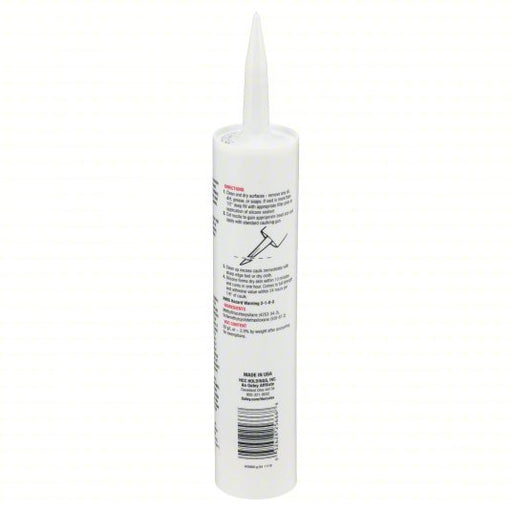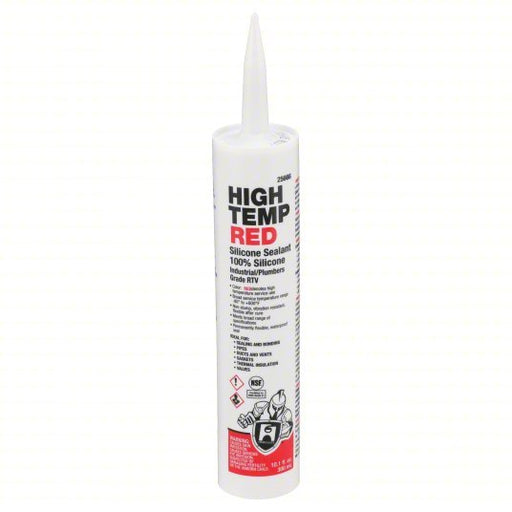Abrasives & Adhesives
This category integrates both Abrasives and Adhesive products, offering a diverse range of tools for various applications. Abrasives play a pivotal role in shaping surfaces in construction, welding, metalworking, and machining, from sanding for finishing to abrasive blasting for paint removal. They handle tasks such as sharpening, deburring, polishing, and refining small parts. Adhesives, sealants, and tapes serve vital roles in bonding, repairing, sealing, and protecting materials and surfaces. From glues that prevent separation upon drying to compounds that patch, protect, and seal against abrasion, corrosion, and leaks, this category encompasses a wide array of solutions for diverse needs across industries.
Jet-Lube 35050 Multipurpose Grease Arctic, 14 oz, Cartridge, NLGI 2, Calcium Thickener
Low Temperature Grease, NLGI Grade 2, Base Oil Mineral, Container Size 14 oz., Lubricant NSF Rating Not Rated, Grease Thickener Calcium Sulfonate,...
View full detailsHercules 25666 Silicone Sealant High Temp, Red, 10 oz, Cartridge, 301% to 500% Elongation Range
Silicone Sealant, Color Red, Application HVAC, Duct and Electrical, Container Size 10 oz, Container Type Cartridge, Resistance Properties Mildew R...
View full detailsHercules 15703 Pipe Thread Sealant Brush-On Blue Block, 4 fl oz, Brush-Top Can, Blue
Pipe Thread Sealant, Cure Type Non-Hardening, Series Brush-On Blue Block, Container Size 4 fl oz, Container Type Brush-Top Can, Maximum Operating ...
View full detailsDAP 18670 Acrylic Latex Caulk Alex Painter's, White, 10 oz Container Size, Cartridge
Acrylic Latex Caulk, Color White, Application Multipurpose, Container Size 10 oz, Container Type Cartridge, Finishing Features Paintable, Resistan...
View full detailsNorton 66252842027 Depressed Center Cut-Off Wheel: Type 27, 4 1/2 in x 3/32 in x 5/8"-11, Aluminum Oxide
The Norton 66252842027 Depressed Center Cut-Off Wheel features premium aluminum oxide grain technology for fast cutting and long life. Its depresse...
View full detailsNorton 66261137322 Sanding Disc 6 in Dia, Non-Vacuum, Zirconia Alumina, 80 Grit, F Wt Paper, BlueFire H822, PK4
Sanding Disc, Abrasive Type Coated, Abrasive Material Zirconia Alumina, Backing Material Paper, Backing Weight F, Coating Coverage Closed, Grit 8...
View full detailsBallotini D (50-70) Blast Media Glass Beads, 50 to 70 Mesh, 53 lb
Blast Media, Abrasive Media Type Glass Beads, Grit Not Rated, Container Size 53 lb, Compatible Mesh Size - Minimum 50, Compatible Mesh Size - Max...
View full detailsNorton 07660789399 Abrasive Cut-Off Wheel Type 1, 14" x 3/32" x 1", Aluminum Oxide, 36 Grit, Metal
Abrasive Cut-Off Wheel, Abrasive Material Aluminum Oxide, Grit 36, Connector Size 1 in, Connector Type Unthreaded Hole, Overall Diameter 14 in, O...
View full detailsNorton 66252843611 Cut-Off & Grinding Wheel Type 27, 4 1/2" x 1/8" x 7/8", Aluminum Oxide, 24 Grit, Metal
Cut-Off & Grinding Wheel, Abrasive Material Aluminum Oxide, Connector Size 7/8 in, Connector Type Unthreaded Hole, Grit 24, Overall Diameter ...
View full details3M 4941 Double-Sided Foam Tape, Acrylic, 3/4 in x 36 yd, 1/32 in Tape Thick, Gray, 3 PK
Tape Type Double-Sided VHB (Very High Bond) Tape, Tape Sub-Type Double-Sided VHB Conformable Foam Tape, Tape Brand 3M(TM), Sub-Brand VHB(TM), Seri...
View full detailsWidia M41327 Carbide Bur Ball, SD-11, Double Cut, 1/8" Head, 1/4" Shank
Carbide Bur, End Type Radius, Cut Type Double, Shank Dia. 1/4 in, Head Dia. 1/8 in, Head Length 3/16 in, Included Angle Not Applicable, Overall Le...
View full detailsGorilla 105629 Duct Tape Black, 1 7/8 in Roll Wd, 30 yd Overall Roll Lg, 16.8 mil Thick, Rubber
Tape Thickness 16.75 mil, Tape Brand Gorilla, Common Industry Automotive, Construction, Electronics, General Maintenance & Repair, Safety, War...
View full detailsMcMaster 45615A56 Cutoff Wheel for Metal 4-1/2" Diameter, 0.045" Thick, 13, 580 rpm, 36 Grit
Use these wheels to cut through metal such as iron, stainless steel, and steel. They are reinforced with two layers of fiberglass mesh. Choose coar...
View full detailsAnti-Seize 46335A Thread Sealant Tape POLY-TEMP® GAS (XHD), Extra HD, 1/2 in x 43 ft, Yellow
Thread sealant tape for gas is a high density tape intended for fuel or oxygen pipe lines. High-density tape provides a stronger seal with less tap...
View full details3M 35-GRAY-3/4 Insulating Electrical Tape Gen Purpose, Scotch®, 35, Vinyl, 3/4 in x 66 ft, 7 mil Tape Thick
Insulating Electrical Tape, General Purpose, Vinyl, Tape Adhesive Material Rubber, 3/4 in, 66 ft, 7 mil, 3M(TM), Scotch(R), Series 35, Gray, Minim...
View full detailsDeWalt DW8352 Abrasive Flap Disc Type 27, 4-1/2" x 7/8", Zirconia Alumina, 60 Grit, Fiberglass Bk, HP
Abrasive Flap Disc, Abrasive Type Coated, Abrasive Material Zirconia Alumina, Grade Medium, Backing Plate Material Fiberglass, Connector Size 7/8...
View full detailsKVM Tools 66254442950 Cup Brush Twisted Steel, 2 3/4 in Dia, 0.02 in Fill Dia, 3/8"-24 Arbor
Cup Brush, Product Type Cup Brush, Bristle Type Standard Twist Knot Wire, Bristle Material Carbon Steel, Brush Dia. 2 3/4 in, Wire Dia. 0.02 in, ...
View full detailsWeiler 14206 Cup Brush Crimped Steel, 5 in Dia, 0.014 in Fill Dia, 5/8"-11 Arbor
Cup Brush, Product Type Cup Brush, Bristle Type Crimped Wire, Bristle Material Carbon Steel, Brush Dia. 5 in, Wire Dia. 0.014 in, Bristle Length ...
View full detailsWeiler 93243 Cup Brush Crimped Steel, 3 in Dia, 0.014 in Fill Dia, 5/8"-11 Arbor
Cup Brush, Product Type Cup Brush, Quick Change System Not Applicable, Bristle Type Crimped Wire, Bristle Material Carbon Steel, Brush Dia. 3 in,...
View full detailsWeiler 93398 Cup Brush Twisted Steel, 5 in Dia, 0.023 in Fill Dia, 5/8"-11 Arbor
Cup Brush, Product Type Cup Brush, Bristle Type Standard Twist Knot Wire, Bristle Material Carbon Steel, Brush Dia. 5 in, Wire Dia. 0.023 in, Bri...
View full detailsNorton 66252839100 Wire Wheel Brush Crimped Steel, 8 in Dia x 1 in Wd, 5/8 in Arbor, 0.014 in Fill
Wire Wheel Brush, Bristle Type Crimped Wire, Product Type Wire Wheel Brush, Bristle Material Carbon Steel, Brush Dia. 8 in, Grit Not Applicable, ...
View full details3M 23-3/4X30FT Insulating Electrical Tape High-Volt, Scotch®, Rubber, 3/4 in x 10 yd, 30 mil Tape Thick
Insulating Electrical Tape, 3/4 in, 10 yd, 30 mil, Black, Voltage Rating 69 kV, Tape Adhesive Material Rubber, 3M(TM), Scotch(R), 23, Minimum Tape...
View full details3M 10646 Scotchrap™ 50 Insulating Electrical Tape Corrosion-Protection, Vinyl, 4 in x 100 ft, 12 PK
Insulating Electrical Tape, Corrosion-Protection, Vinyl, Tape Adhesive Material Rubber, 4 in, 100 ft, 10 mil, 3M(TM), Scotchrap(TM), Series 50, Bl...
View full details3M 8979 Duct Tape: Clean Removal, Heavy Duty, 2 in x 60 yd, Black, Continuous Roll, Pack Qty: 1
Tape Thickness 11.5 mil, Tape Brand 3M(TM), Common Industry Construction, Indoor and Outdoor, Imperial Tape Length 60 yd, Imperial Tape Width 2 in...
View full details

































